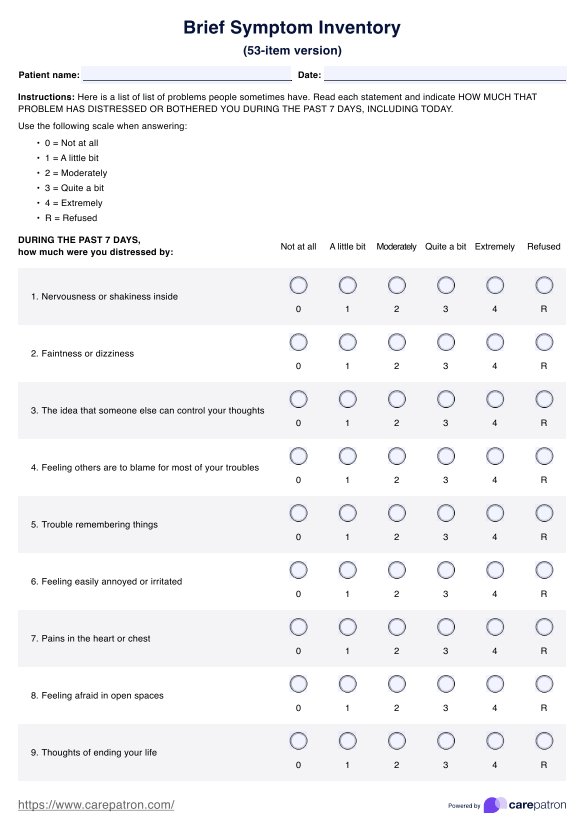Depending on the patient's response time, the Brief Symptom Inventory (BSI) typically takes about 10 to 15 minutes to complete. This duration allows for a thorough assessment of psychological distress and brief symptom inventory scoring.

Brief Symptom Inventory
Understand the Brief Symptom Inventory (BSI) for assessing psychological distress, symptom severity, and patient progress in clinical settings.
Brief Symptom Inventory Template
Commonly asked questions
The Brief Symptom Inventory (BSI) test is generally designed for adults, but adaptations or related tools may be used for children and adolescents based on what the Brief Symptom Inventory measures in those age groups.
While the Brief Symptom Inventory(BSI) is primarily intended for clinical settings, it can also be used with non-clinical populations to assess general psychological distress. However, results should be interpreted with caution. For more details, refer to the brief symptom inventory PDF.
EHR and practice management software
Get started for free
*No credit card required
Free
$0/usd
Unlimited clients
Telehealth
1GB of storage
Client portal text
Automated billing and online payments











